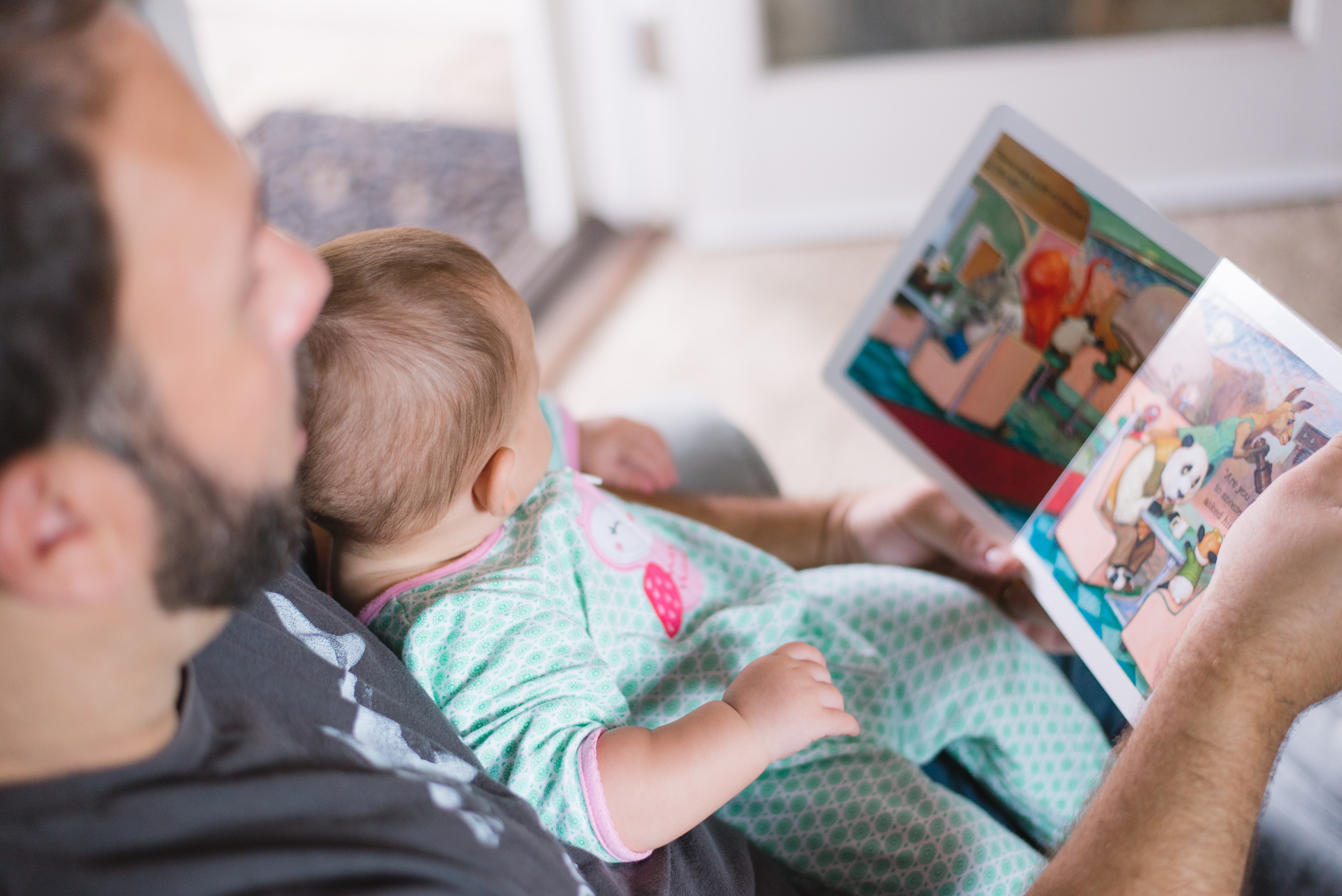Ever wondered how we learned to read for the first time when we were a kid? From mastering our ABCs to counting, we can all appreciate our teachers’ and parents’ in instilling the interest to learn in us. Exposing children to reading at a very young age can aid them in daily conversations with their parents and friends, improve their self-esteem, and acquire different perspectives. According to Jessica Logan, an assistant professor of educational studies at The Ohio State University in 2019, children who read every day by age 5 will tend to learn more than 290,000 words than those who don’t read books regularly. Hence, they are more likely to pick up on reading skills quickly and well prepared when they enter school.
In this era where technology is now a necessity and social distancing becoming a norm, owning a smartphone or tablet is pretty much obligatory, even for children. As a result, children are likely to spend more time scrolling their gadgets rather than flipping pages of a book. However, it’s not too late to make a change! We all want the best for our children, right? Hence, let us give you some tips that you can follow to drive your kids to read enthusiastically every day.
1. Reading as daily routine

There are 2 approaches that can be taken when reading with children. To begin, make reading a daily routine by reading books to them. Reading bedtime stories to children for 15 to 20 minutes per night is sufficient to foster reading habits. While doing so, try to run your index finger under the print as you read to them. It will help your child to notice that printed words have meaning. Slowly, ask them to recognize the letters and sounds of the words. Parents also can act out by doing a little voice acting to differentiate different moods, characters, and situations. Associating reading with relaxation can strengthen the bond of both parents and children and lower stress levels in kids.
Apart from bedtime stories, you can also sit down and read together with them. Children learn by seeing things surrounding them. “Like mother, like daughter”, seeing their parents read a book might inspire them to do the same thing. Thus, parents who read every day, whether reading newspapers or fiction or even non-fictional books tend to pass the habit down to their kin. Also, since many children own a tablet nowadays, investing in eBooks may encourage them to read more. It can be a change of mood and a fun way for them to enjoy reading. eBooks support children who struggle to read, including those with learning disabilities, as it comes with many functions such as narrations, dictionaries, and music. Through this approach, they can read anywhere and anytime without boundaries. Don’t forget to set up parental control settings to avoid them from getting distracted while reading.
2. Create a reading space
Setting up a reading space for children can be a fun and colourful experience! We believe that a good reading environment is vital for children to pay attention to read without any disturbances. In this way, creating a comfortable and quiet reading area is a must! Consider getting inspiration by visiting children’s libraries, interior design videos on YouTube or Pinterest. It doesn’t need to be extravagant. The choice of better quality furniture like a small shelf filled with books and comfortable soft bean bags are adequate. Ensure that the content of each book is tailored to the age of the children; easy enough for them to learn quickly and also books that are difficult enough to challenge them.

Moreover, a comfortable place with fewer distractions (like TVs, entrances, and exits) and enough lights are essential for a good reading space. To make the area more welcoming, try to decorate the walls with book posters, children’s art, and book quotes that will inspire them to read more happily!
3. Bring your children to local bookstore or library
Either on weekend or weekdays after school, be sure to bring your children to any library or bookstore! The trip can be extra special when you give them time to explore new books, different genres and other reading materials. Also, let your children pick the book as they will be more likely to read a book that caught their interest. Don’t have an idea of what book they could read? No worries! We’ve compiled a list of books with broad and inclusive knowledge that is perfect for children.
Kristen Bell & Benjamin Hart’s The World Needs More Purple People
Written by Kristen Bell, an actress and producer along with Benjamin Hart (creative director), The World Needs More Purple People is a picture book that sheds light on how to become ‘purple’, made up of people who have these four categories:
- Someone who ask good questions
- Someone who laughs a lot
- Someone who uses their voice to speak out and stand up for others
- Someone who will be themselves in any circumstances
The aforementioned book is about a society overcoming a political divide (red vs. blue party) and the journey of the main character, Penny Purple, on discovering common ground in people, embracing and respecting their differences by being ‘purple.’ It’s a fantastic book for kids to learn and express their curiosity, as well as comprehend ways to advocate for change. Considering children have different perceived levels compared to adults, Bell and Hart co-authored with Goodreads’ author and illustrator, Daniel Wiseman on designing the illustrations in the book for the children to understand the messages conveyed by them.
Elena Favilli & Francesca Cavallo’s Good Night Stories For Rebel Girls
“It is important that girls understand the obstacles that lie in front of them. It is just as important that they know these obstacles are not insurmountable. That not only can they find a way to overcome them, but that they can remove those obstacles for those who will come after them.” – Elena Favilli, Good Night Stories For Rebel Girls.
Illustrated by 60 female artists from all over the world, this is an ideal book for bedtime stories and a must-read for children of all ages (from young to teenage) and gender. Through the crowdfunding of their project, the authors ended up collecting more than one million dollars and thus led to the publication of this book. Doesn’t this sound incredible?
The book features 100 stories of 100 remarkable women and girls throughout history. From activist Malala Yousafzai to world tennis player Serena Williams, we can say that this book sets an example for young children to find role models that can be inspired every day in their daily lives. Not only girls, but boys can gain a lot from reading this as well. Favilli and Cavallo have decided to raise concern regarding women empowerment in society. Women are still not seen as an equal today, although a lot of the gender equality movement has been going on since we know it. Thus, this book has the power to influence the mind of every little human being out there to look at the world differently by paying more respect to all the women who have shaped this world to this day.
Kimberly Kluger-Bell’s, The Pea That Was Me: A Sperm Donation Story
You might feel a little awkward talking to your children about sexuality, but Bell’s light-hearted picture book will answer all the questions related to the issue by using friendly terms and clear concepts about the process of making a baby. Bell is an expert in reproductive psychotherapy and an author who have published a couple of pregnancy-related books.
The story portrays an inquisitive young child who was conceived with the help of a sperm donor and asks questions about where they came from. The writer emphasises the diversity of childbirth and conveys the message that every childbirth is special no matter how it was born in this world. This book is a great way to introduce children aged 2 and over to donor conception.
4 . Communicate with your children regarding books

Sometimes, we might think that reading with children is enough for them to develop the habit. But, actually, it might be the opposite. Communicating with children regarding the books that they have read really packs a punch. A simple question such as “What is your favourite part of the book?” or “What happened in the story?” is enough for them to describe the details of the book. This will inspire the children to speak more confidently and learn how to articulate their thoughts. By showing interest and being supportive, they will develop a sense of appreciation and love towards reading and you.
Through discussing the characters and pictures in the story, children will learn about how books work and understand their lessons. Another effective way of communicating is that you could connect the storyline from those books to real-life events. As many stories portray a character’s challenges in life, children can try to relate those situations to their own lives. Subsequently, they can learn a great deal of moral values and how to confront the many circumstances in life while growing up without you telling them all the time. Haha!
5. Rewarding them for their accomplishment
Who wouldn’t love to get a reward from their parents for accomplishing something? Well, we do! Remember the feeling when our parents used to praise us for doing something good at a young age? Such an unforgettable memory, we bet. Doing the same thing to our children will definitely make them feel joyful and loved. Give them a little reward for finishing a book, such as treating them to a nice meal or taking them on a trip to anywhere they wished to go. Pay attention to their reaction after doing so. They will be more passionate to continue reading and eventually develop the habit without them realizing it. Extrinsic rewarding can be a little tricky, so be extra vigilant if your child is just doing it for the rewards.
In conclusion, a learned child can have a bright future and make an impact on society. By introducing reading habits at a young age, we believe that they’ll grow successful in most matters. Although it may be hard at first, always remember that it is better to take baby steps than giving up on trying. Every child learns differently. Therefore, it is crucial for you to keep track of your child’s learning style, whether it is verbal, auditory or practical. Every happy memory created for a child is a lifetime treasure for them. So, have a great time reading with them!
You can also get Midnight Monologues by Charissa Ong here! The compilation of both poems and short stories in the book is suitable to read for all ages! 🙂




